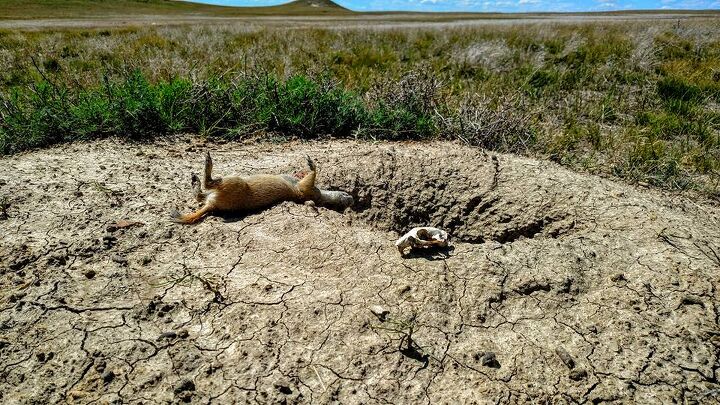Summer is the prime time to hone your rusty rifle skills after being cooped indoors all winter. For some, a trip to a local range or shooting on your own property can shake the dust off your shooting skills. Many others desire a more “target rich” environment and may head west for the challenge of prairie dog hunting.
Prairie dogs, for those who are not familiar with them, are similar to a groundhog or gopher. In many western states like North Dakota, South Dakota, Montana, and Wyoming they are very abundant to say the least. They are quite the nuisance to residents in these states for several reasons.
- Livestock trip and fall in holes breaking bones
- Dirt mounds ruin the prairie with grass sometimes never grows back
- Prairie dogs eat the roots of native grasses underground destroying the prairie
- If they establish residency on your lawn, it’ll be ruined very quickly
All of these problems get exacerbated by the fact that prairie dogs multiply faster than rabbits! So most landowners are more than happy to let you onto their land to exterminate their furry plague. If you are new to the sport of prairie dog hunting or want to see if you are already on the level of a Prairie Dog Assassin, check out this list!
- Know the Lay of the Land – Before you unleash a flurry of rounds on a prairie dog town range specific objects (a ravine, a large dirt mound, a funny-looking cactus, etc.) and use them as yardage reference points. If you do not have a spotter this can be extremely helpful and eliminate missed shots.
- Get a Mil-Dot! – No matter how confident you are in your ol’ Kentucky Windage aiming, adding a scope with a Mil-Dot reticle will make your life significantly easier. It will give you reference points for your hold-over and hold-under on windy days and longer shots. A mere cross-hair reticle cannot offer that.
- While You’re at it, Get a Parallax! – The parallax adjustment (traditionally an adjustment knob on the left hand side of a scope) can be a valuable addition to any varmint package. When shooting at varying distances the parallax adjustment can bring an object into clarity at 50 yards, 400 yards and back and forth. The focus ring on your scope’s eyepiece can only adjust and compensate for so much. The parallax can help eliminate a mirage from heat and give you a more clear view of what you are shooting.
- Calculate your “Kentucky Windage” – Determine your hold-over and hold-under adjustments very early. Packing with a simple anemometer, an instrument to measure wind speed, can help calculate this; otherwise, on-the-fly practice will need to occur. Attempt to shoot a prairie dog at 100 yards and note the hold over/hold under either mentally or on scratch paper. Then, repeat this at 200 yards, 300 yards, and/or any distance you have available to shoot.
- The Buddy System – If you are not shooting alone, have a buddy spot and range your active shots for you. As opposed to you and your buddy competing against each other simultaneously where you would likely scare more prairie dogs than shoot you can work together. In this manner, you can make more intelligent shots, alternate rifles so neither one overheats, and create less noise which will draw less concern from far off prairie dogs.
- Bring the Right Tools for the Job – Most people only bring one rifle with while prairie dogging, and it’s typically in the .223 Rem to .243 Win caliber range. These are perfect light, varmint calibers for shots in the area of 150 to 400+ yards, but people will use the same rifle for shots under 150 yards as well. There is nothing ethically or legally wrong in doing so. It is just that you are hitting a nail with a sledgehammer instead of a carpenter’s hammer. You follow? You will get the job done, but it is a bit of overkill. A good alternative is to bring with a 2nd smaller caliber like .17 HMR, .22 LR, .22 WMR, or something similarly small. Whether you are shooting alone or in a group it will ensure your rifles do not overheat by alternating, you will have options for near and far shots, and your typical “bunny” shots that are under 100 yards will now be a bit more challenging and sporting by switching to a smaller caliber.
So there you have it! Are you a PRAIRIE DOG ASSASSIN?! Or do you strike as much fear into a prairie dog’s heart as a Keebler elf? (Their cookies are friggin’ delicious though)
The next time you journey out west or try varmint shooting add these ideas and skills into your routine to be a better shooter.
 Your Privacy Choices
Your Privacy Choices
